Research Article - (2023) Volume 9, Issue 2
Occlusal Standards in Temporary Dentition: A Survey of an Infantile Population in Fez, Morocco
Achabi Najoua*
Department of Dental Medicine, Mohammed V University, Rabat, Morocco
*Correspondence:
Achabi Najoua, Department of Dental Medicine, Mohammed V University, Rabat,
Morocco,
Email:
Received: 09-Mar-2023, Manuscript No. IPPDPD-23-15856;
Editor assigned: 13-Mar-2023, Pre QC No. IPPDPD-23-15856 (PQ);
Reviewed: 27-Mar-2023, QC No. IPPDPD-23-15856;
Revised: 09-May-2023, Manuscript No. IPPDPD-23-15856 (R);
Published:
16-May-2023, DOI: 10.36648/2471.3082.23.9.010
Abstract
Objective: Until these days, the occlusal standards characterizing the Moroccan child population have
not been evaluated. Only international references are used. The objective of this work is to place the
occlusal standards of our population in relation to international references, by comparing the intra
and inter arch parameters found in our study (arch perimeter, inter canine distance, inter molar
distance) with those found in other similar studies.
Methodology: A sample of 30 children (17 girls, 13 boys), aged from 3 to 5 years, was selected from
the nurseries of the city of Fez. Study casts were made. Measurable data were collected and analyzed
by SPSS 13.0 software (Chicago, IL, USA).
Results: The majority of the children examined had different types of diastema. Their prevalence was
(96.7%) in the maxilla and (66.66%) in the mandible, with a predominance in males. The length,
perimeter, and width of the arch in the children of our sample are of an average value that is close to
the other populations, but it was difficult to compare all the results; due to the use of different
measurement techniques by the investigators. A similar terminal plane and canine ratio were found in
most children in our survey. Incisal overlap and overhang had successive average values of 1.10 mm
and 1.20 mm.
Conclusion: Our study will be a key for Moroccan investigators in different regions of the country to
be able to determine the characteristic occlusal standards of our country and to be able to compare
them with those of similar studies.
Keywords
Diastema; Maxilla; Inter canine distance; Inter molar distance; Infant
Introduction
Childhood is the mirror in which adult proportions are
reflected. Similarly, the type of occlusion in the temporary
dentition predicts the occlusion in the permanent dentition [1]. The temporary dentition also contributes to the
harmonious development of the maxilla-facial complex [2].
Knowledge of the occlusal ratios in the temporary dentition is
an essential tool in the oral health care of the child. Indeed,
distinguishing between (the physiological) and (the pathological) allow the practitioner to make early diagnoses
and thus intercept or prevent malocclusions, dysfunctions, or
dysmorphias [3].
Numerous observational studies of occlusion in temporary
dentition have confirmed that occlusal characteristics vary
among populations and ethnic groups [4]. Studies of
temporary dentition occlusion have been widely conducted in
children of different ages in various parts of the world [5].
However, very few studies have been done on African
populations. Until today, the occlusal standards of the
Moroccan child population have not been evaluated. The
objective of this work is to report the dimensions and
observations of occlusal ratios in temporary dentition in a
Moroccan child population to situate them in relation to
international references.
Materials and Methods
Population of the Study
The selection was made on a Moroccan child population,
made up of 30 subjects, including 17 girls and 13 boys, with
an age range between 3 and 5 years. This age group was
selected because of the presence of a complete and stable
temporary dentition. From this sample, casts were made [6].
Technical Material
For our study, we used the material described in the table
below. The data collected were recorded on a survey form
(Table 1).
| Impression material |
Impression casting material |
Study material |
| Tongue depressors |
Hard plaster |
Vernier caliper |
| Gloves |
Mixing bowl and spatula |
Graduated ruler |
| Fingerprint holders |
Vibrator |
Orthodontic caliper |
| Type A alginate |
Plastic bases |
Thickness caliper for measuring diastemas |
| Bowl |
Boxes for the conservation and protection of the plaster models |
Graduated periodontal probe |
| Mixing spatula |
Felt pen for numbering the models |
Brass wire of 0.12 mm |
| |
|
Pink wax to fix the brass wire on the models |
| |
|
Orthodontic wire of 0.19 mm |
Table 1: Material used in the study.
Selection Criteria
The selection included subjects with a stable temporary
dentition, free of caries, or with carious lesions not disturbing
the interdental relationships (e.g. lesions on the vestibular,
palatal or lingual surface).
We excluded from our study:
• Any child with a carious lesion with loss of substance, or a
structural abnormality, likely to modify the interdental
relationships.
• Subjects with missing teeth.
• Wearers of orthopedic or other appliances.
• Children with clinically detectable oro-facial or parafunctional
dysfunction.
• Uncooperative children or children with nausea reflux, or
a known allergy to alginate.
Study Setting
The study was conducted in preschools in the city of Fez and
some cases were detected in a dental office. The dental
examinations and the taking of impressions were carried out
in the nurseries for some children and also in dental surgery
for others [7-11].
Course of the Survey
The study consisted of three stages:
• Oral examination: It allowed identifying a stable and
healthy temporary dentition with occlusal variables in the
three directions of space.
• Impression taking: The casts obtained are numbered and
kept in boxes.
• Recording of measurements and occlusal parameters
between and within arches.
Observations and measurements are taken in the three
directions of space in both the maxilla and the mandible. All
the data collected are noted on the survey form.
For the intra-arch arrangement: Diastemas, their numbers,
their multiple situations, and also their measurements were
identified using the caliper.
The interincisal diastema was measured between the most
mesial point of the mesial surface of the right temporary
central incisor and the most mesial point of the mesial surface
of the left temporary central incisor (Figure 1).
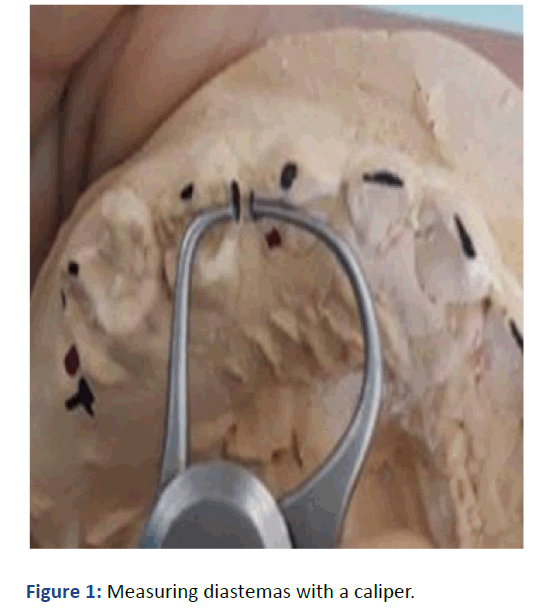
Figure 1: Measuring diastemas with a caliper.
The percaline diastema measurement was taken between the
most distal point on the distal surface of the temporary lateral
incisor and the most mesial point on the mesial surface of the
temporary canine.
The post canine diastema was determined between the most
distal point on the distal surface of the temporary canine and
the most mesial point on the mesial surface of the temporary
first molar.
• The inter-canine distance is measured with an orthodontic
caliper between the most distal points of the distal
surfaces of the right and left canines.
• The inter-molar distance was measured by an orthodontic
caliper between the most distal points of the distal
surfaces of the temporary second molars.
• The arch perimeter was measured using brass wire and
wax to fix it on the curve passing through the vestibular
cusp tips, from the most distal of the second temporary
molars, the cusp tips of the first temporary molars, the
tips of the canines and the free edges of the incisors, and
then the curve was measured using a ruler graduated in
(mm).
• The arch length is the perpendicular of the line between
the distal surfaces of the temporary second molars,
marked by the orthodontic wire, and the free edge of the
temporary central incisors (Figure 2).
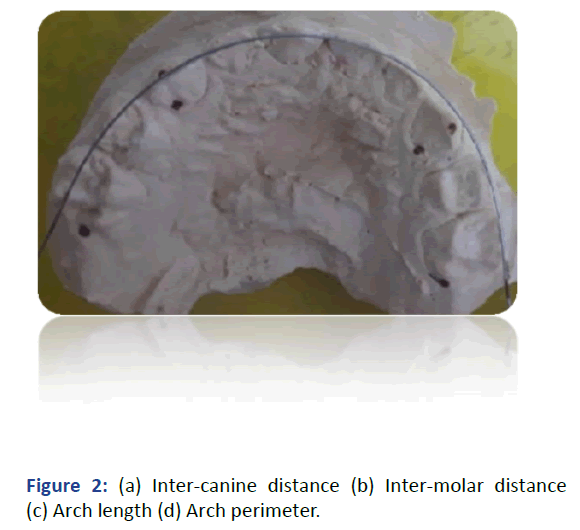
Figure 2: (a) Inter-canine distance (b) Inter-molar distance
(c) Arch length (d) Arch perimeter.
For the inter-arch ratio, the following parameters were
determined:
• In the vertical direction, we examined and measured the
incisal overlap.
• In the transverse direction, we specified the coincidence
or not of the inter-incisal points (Figure 3).
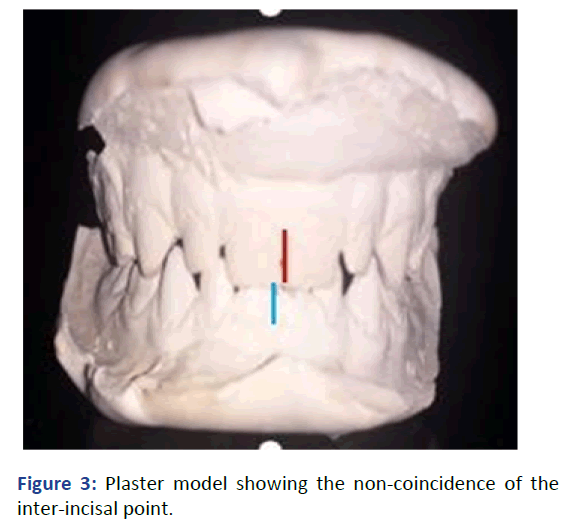
Figure 3: Plaster model showing the non-coincidence of the
inter-incisal point.
In the Anteroposterior Direction
Chapman's terminal planes: Defined by the distal surfaces of
the lower and upper temporary second molars. There are 3
types of terminal planes: straight, mesial, and distal.
The inter-canine relationships are noted, referring to Angle's
classification: Class I correspond to the projection of the
maxillary canine tip at the canine/lower 1st molar line. In front
of this line is class II and behind it is class III.
At the incisal level, the incisal overhang (over-jet) is
determined by a graduated periodontal probe. Statistical
analysis was performed with the "Statistical Package for Social
Science (SPSS)" software, and for data entry, the software
Excel of Windows 2010 was used. These statistics allowed
making a descriptive analysis of each occlusal variable in the
sample. They are composed of the average, minima, maxima,
standard deviations, and percentages. Values were taken from
girls and boys, maxilla and mandible [12-17].
Results
Intra-Arch Arrangement
Diastemas
The highest frequency of diastemas was observed in the
maxilla. The inter incisal diastema was more present in the
maxilla. The pre-canine diastema was also dominant in the
maxilla with a value of (93.3%). In the mandible, the
post-canine diastema was present in (56.7%) of the children
(Table 2).
| Diastemas |
Inter-incisor diastemas |
Simian diastemas |
| Pre-canine |
Post-canine |
| Max.: 96.7% of children Mand.: 66.7% of children |
Max.: 53.3% of children Mand.:50% of children |
Max.: 93.3% of children |
Mand.: 56.7% of children |
Table 2: Distribution of inter-incisor, pre-and post-canine diastemas in the maxilla and mandible.
Other Intra-Arch Parameters
The inter-canine distance, the inter-molar distance, the perimeter, perimeter, and arch length, show greater values in the
maxilla maxilla than in the mandible (Table 3).
| Intra-arch parameters (in mm) |
Maxillary (SD) |
Mandible (SD) |
| Inter-canine distance |
30,17 (+/-2,57) |
24,57 (+/-1,69) |
| Inter-molar distance |
35,70 (+/-1,29) |
33,57 (+/-1,54) |
| Arch perimeter |
72,70 (+/-3,019) |
68,63 (+/-2,22) |
| Arch length |
28,37 (+/-1,45) |
24,60 (+/-1,522) |
Note: SD: Standard Deviation.
Table 3: Average values of inter-canine distance, inter-molar distance, perimeter and arch length..
Inter-Arch Ratio
Anteroposterior direction: The terminal plane of the right side
is straight in (56.7%) of children, mesial in (30%), and distal in
(13.3%) of children. In the left hemi-arch, the three types of
terminal planes are equally distributed in our population
(Figure 4).
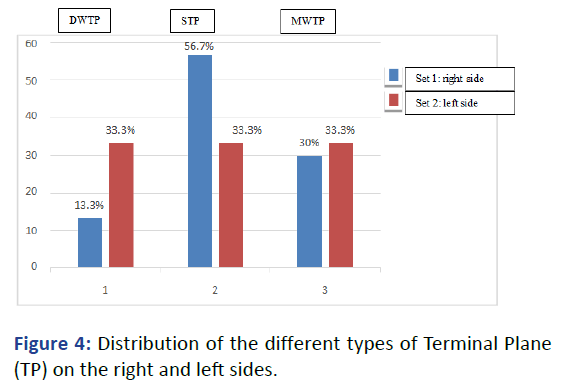
Figure 4: Distribution of the different types of Terminal Plane
(TP) on the right and left sides.
Note: DWTP: The Distal Walking Terminal Plane; STP:
The Straight Terminal Plane; MWTP: The Mesial Walking
Terminal Plane. Set 1: The right sided terminal plane; Set
2: The left sided terminal plane.
56.7% of the children had similar terminal planes between the
right and left sides (Figure 5).
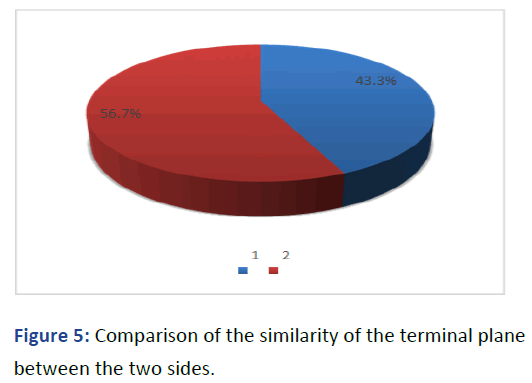
Figure 5: Comparison of the similarity of the terminal plane
between the two sides.
Note: 1: Not similar; 2: Similar.
The canine ratio is characterized by the predominance of
class I on both the right and left sides (Figure 6).
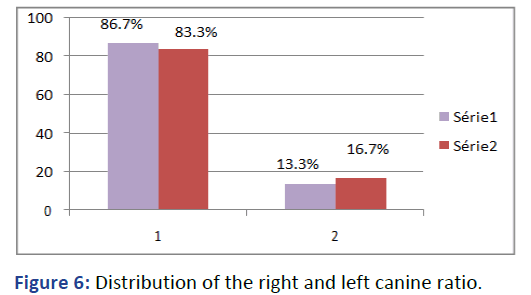
Figure 6: Distribution of the right and left canine ratio.
Note: 1: Class I, 2: Class II, Series 1: The right side canine
ratio, Series 2: The left side canine ratio.
The incisal overhang is characterized in our sample by
an average value of 1.20 mm (Table 4).
| Parameter |
Over-jet |
| Average variable in (mm) |
1,20 |
| Standard deviation |
0,794 |
Table 4: Average value of the incisal overjet.
The vertical direction: The infant population in our sample is
characterized by an incisal overlap with an average value of 1.20 mm (Table 5).
| Parameter |
Over-bite |
| Average variable in (mm) |
1,20 |
| Standard deviation |
0,794 |
Table 5: Average value of the incisal overbite.
The transverse direction: Half of our population (50%)
presents a median inter-incisal contact. In the other half,
16.7% of the children did not show inter-incisal contact due to
the presence of diastemas (Figure 7).
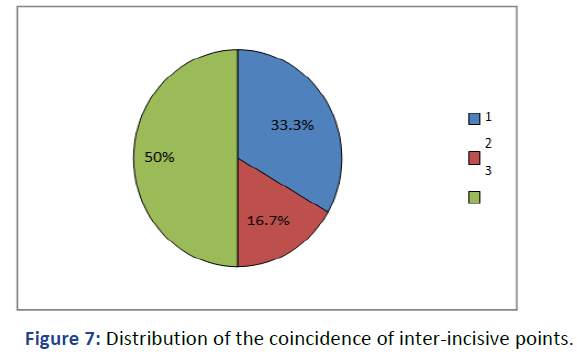
Figure 7: Distribution of the coincidence of inter-incisive points.
Note: 1: Coincidence of inter-incisal points, 2: Absence of
coincidence, 3: Presence of median inter-incisal diastemas.
Comparative Results between Girls and Boys (Intra-
Arch Ratio)
In the maxilla, all the girls in our sample have diastemas. For
the boys, only one is an exception. In the mandible, the boys
have a high prevalence of diastemas. The average value of the
arch length of the girls is slightly higher than the boys’ arch
length in both the maxilla and mandible. While the intercanine
and inter-molar distances are higher in the boys of our
population (Table 6).
| Parameters |
Maxillary |
Mandible |
| Sex |
Girl |
Boy |
p |
Girl |
Boy |
p |
| Diastemas |
100% (17) |
92.30% (12) |
0,011 |
58.182% |
76.92% |
0,348 |
| Perimeter |
72,24 mm |
73,31 mm |
G: 0,683
B: 0,909 |
68,71 mm |
68,54 mm |
G : 0,58
B: 0,57 |
| Length |
28,41 mm |
28,31 mm |
G: 0,41
B: 0,30 |
24,71 mm |
24,46 mm |
G: 0,28
B: 0,53 |
| Inter-canine distance |
29,65 mm |
30,85 mm |
G: 0,568
B: 0,775 |
24,18 mm |
25,08 mm |
G : 0,27
B: 0,60 |
| Inter-molar distance |
35,41 mm |
36,08 mm |
G: 0,243
B: 0,431 |
33,00 mm |
34,31 mm |
G: 0,36
B: 0,36 |
Table 6: Comparative results of intra-arch ratios between girls and boys.
Comparative Results between Girls and Boys (Inter-
Arch Ratio)
Our sample is characterized on the right side by the
predominance of the straight terminal plane in girls and the
mesial plane in boys. On the left side, the terminal plane is straight in 50% of cases for both girls and boys. A canine ratio
of class 1 on both sides is observed especially in girls. The
average value of overlap and overhang was higher in the 13
boys in our study. The absence of contact of the inter-incisive
points was also observed in 60% of the boys (Table 7).
| Parameters |
Girls (N=17) |
Boys (N=13) |
| Terminal plane: |
|
| Right side |
Straight: 52.9% |
Mesial: 75% |
| Left side |
Straight: 50% |
Straight: 50% |
| Similarity |
47.1% |
52.9% |
| Canine ratio: |
Class 1 |
|
| Right side |
53.8% |
46.2% |
| Left side |
56% |
44% |
| Similarity |
47.8 % |
52.2 % |
| Over-jet |
1,12 mm |
1,31 mm |
| Over-bite |
0,76 mm |
1,54 mm |
| No coincidence of inter-incisal points |
40% |
60% |
Table 7: Comparative results of inter-arch ratios between girls and boys.
Discussion
We describe the occlusal parameters in the stable temporary
dentition of our sample in the three directions of space,
noting the intra and inter arch ratios.
Surveys dealing with the same subject have been carried out
in many parts of the world, for example: In Sweden by Seipel,
in North America by Moorrees, et al., in Great Britain by
Clinch. Few have concerned African populations. We will
compare our results with the literature on the same subject,
highlighting the differences between the two sexes.
The results of the present study indicate that the presence of
diastemas seems to be a common feature concerning the
temporary dentition of our population, although there are
some exceptions. Diastemas are present mainly in the maxilla
(96.66%) and are observed in all girls in our study. The
mandibular arches of our sample present (66.66%) diastemas
and are mostly present in boys. The table below gives a
summary of the comparative results of the prevalence of
diastemas with other studies performed by Taiwanese, Polish,
Jordanian, and Brazilian (Table 8).
| Studied population |
Sample size |
Age range |
Prevalence of diastemas in the maxilla |
Prevalence of diastemas in the mandible |
Difference between girls and boys |
| Morocco |
30 children |
3 to 5 years |
96.7% |
66.7% |
Girls have more diastemas in the maxilla and less diastema in the mandible. |
| Taiwan |
147 children |
3 to 6 years |
85% |
72.1% |
Higher frequency in boys. |
| Poland |
50 children |
5 years |
90% |
80% |
- |
| Jordan |
Group 1: 456 children |
2.5 to 4 years |
61.4% |
62.9% |
Diastemas are more frequent and larger in boys than in girls. |
| Group 2: 592 children |
5 to 6 years |
62.2% |
59.6% |
| Brazil |
356 children |
3 to 5 ½ years |
89.9 % |
67.1% |
There is a significant difference in the prevalence of diastemas between girls and boys, without naming the sex with the highest frequency. |
Table 8: Comparative results of diastema prevalence with other studies performed by Taiwanese, Polish, Jordanian, and Brazilian.
We also compared the maxillary and mandibular arch
dimensions of our study population with those obtained in other similar studies, and we have gathered the results in
the table below (Table 9).
| Parameters |
Studied populations |
Maxillary (mm) |
Mandible (mm) |
Differentiation between girls and boys |
| Arch Perimeter (AP) |
Morocco |
72,70 mm |
68,63 mm |
Max: (AP) more important for male gender |
| England |
79,07 mm |
72,21 mm |
Bigger for boys |
| Peru |
74.47 mm |
68.56 mm |
| Pakistan |
73.066 mm |
63.052 mm |
| Arch width CD: Inter-canine distance MD: Molar Distance |
Morocco |
CD:30,17 mm MD: 35,70 mm |
CD: 24,57 mm MD: 33,57 mm |
Larger for boys |
| Saudi Arabia |
CD:31.09 mm MD: 33.31 mm |
CD: 28.55 mm MD: 28.63 mm |
Larger for boys |
| Turkish |
CD: 33.5 mm MD:56 mm |
CD: 22.75 mm MD: 41.5 mm |
| Pakistan |
CD:33.171 mm MD:46.100 mm |
CD: 26.182 mm MD: 48.694 mm |
|
Arch length |
Morocco |
28,37 mm |
24,60 mm |
Greater for girls |
| Pakistan |
27.680 mm |
22.667 mm |
Greater for boys |
| Mr. Baume |
27,5 mm |
23,5 mm |
Table 9: Comparative results of the dimensions of the maxillary and mandibular arches found in our study with others performed in England, Peru, Pakistan, Saudi Arabia, Turkey, and also with the one performed by Mr. Baume.
Concerning the vertical direction, we obtained an average
value of the incisal overbite of 1.20 mm. This value is higher in
boys, which is not the case in the Danish who observed
dominance of the anterior gap in their boys.
The Nigerians in their study of 525 children aged from 3 to 4
years reported an average value of the incisal overbite
described as "ideal" without any precision of the normality
references used, which made the comparison with our results
impossible.
In the transverse direction, the inter-incisal point is the
criterion studied in our survey. It was compared with the
Ivorians whose 66.6% of their children present a coincidence
of inter-incisal points, which is not the case with our children,
among whom only 33.3% present coincidences.
In the anteroposterior direction, 56.7% of the children in our
population had similar terminal planes on both sides. The 2
Nigerian and British studies have the same results as ours.
This similarity characterizes mainly the boys of our sample
which is not the case for the Nigerian children where there is
no difference between the two sexes.
Concerning the canine ratio, it is characterized by the
dominance of class 1 and its similarity in 67.6% of the children
in our sample, which is close to the results found by the
Danish and Nigerians. The average value of the incisal
overhang in the boys of our sample was 1.31 mm. However,
girls were characterized by an average overhang value of 1.12
mm. A study looked at incisal overhang measurements for a
population of different ethnicities. In this study, they found
that the incisal overhang (over-jet) had a higher average value
in black children than in white children. In general, our results
are close to the results found by some populations and differ
from those found by others. This may be explained by the
variability in measurement techniques used by investigators.
It was also concluded that there are no ideal occlusal
standards but each population has its own standards, hence
the interest for each population to know the occlusal
standards that characterize them in order to adapt to them.
Conclusion
It is evident from the results of our study that there are
variations in arch dimensions and occlusal characteristics
compared to other racial and ethnic groups. These variations
are certainly at the origin of the difficulties of clinical
adaptation of dental material manufactured in Europe. These
standards could eventually be used for the production of
dental materials (impression trays) adapted to the arches of
Moroccans in the temporary dentition. Our perspectives are
then oriented towards a large scale study to give scientifically
exploitable statistics.
References
- Gunmeen S, Manjul M, Rashu G, Sunil G, Ankita B (2018) Assessment of occlusal characteristics in primary dentition of preschool children in Amritsar, Punjab, India. Current Trends Diagn Treatment. 2(1):15-21.
[Google Scholar]
- Bhat S, Rao HTA, Hegde KS, Kumar BSK (2012) Characteristics of Primary dentition occlusion in preschool children: An epidemiological Study. Int J Clin Pediatr Dent. 5(2):93-97
[Crossref] [Google Scholar] [PubMed]
- Madhuri V, Chandrasekhar R, Vinay C. Occlusal characteristics and spacing in primary dentition: A gender comparative cross-sectional Study. Int Sch Res Notices. 2014:512680.
[Crossref] [Google Scholar] [PubMed]
- Seipel CM (1946) Variations of tooth position. Svensk Tandi Tidskrift. 39:1946.
- Carlos S, Bhim S, Savara QC, Clarkson, Don RT (1970) Prediction of occlusion by measurements of the deciduous dentition. Ore Amer J ortho. 5(6):561-570.
[Crossref] [Google Scholar] [PubMed]
- Lilah MC (1963) Longitudinal study of the mesio-distal crown diameters of the deciduous teeth and their permanent successors. Trans Europ Orthod Sot. 29(1):202-213.
[Crossref]
- Kuo T, SunYu-Fen L, Jui-Tin-H (2018) Prevalence of primate and interdental spaces for primary dentition in 3 to 6 years old children in Taiwan. J Formos Med Assoc. 117:598-604.
[Crossref] [Google Scholar] [PubMed]
- Alhaija AE, Qudeimat MA (2003) Occlusion and tooth/arch dimensions in the primary dentition of preschool Jordanian children. Int J Paediatr Dent. 13:230-239
[Crossref] [Google Scholar] [PubMed]
- Ferreira RI, Barreira AK, Soares CD, Alves AC (2001) Prevalence of features of normal occlusion in deciduous teeth. Search Odontol Bras. 15(1):23-28.
[Google Scholar]
- Leighton BC (2007) The early signs of malocclusion. Eur J Orthod. 29(1):89-95.
[Crossref] [Google Scholar]
- Saman F, Mubassar F, Attiya S (2012) Comparison of tooth and arch dimensions in dental crowding and spacing. POJ. 4(2):48-55.
[Google Scholar]
- Haidi O, Alhajrasi M, Felemban N (2018) Dental arch dimensions, form and tooth size ratio among a Saudi sample. Saudi Med J. 39(1):86-91.
[Crossref] [Google Scholar] [PubMed]
- Sultan O, Servet D (2011) Comparison of the arch forms and dimensions in various malocclusions of the Turkish population. Open J Stomatol. 1:158-164.
[Google Scholar]
- Joanna JO, Piotr S, Maria S (2009) Spacing in deciduous dentition of Polish children in relation to tooth size and dental arch dimensions. Arch Oral Biol. 54(2009):397-402.
[Crossref] [Google Scholar] [PubMed]
- El-Nofely A, Sadek L, Soliman N (1989) Spacing in the human deciduous dentition in relation to tooth size and dental arch size. Arch Oral Biol. 34:437-441.
[Crossref] [Google Scholar] [PubMed]
- Holcomb AE, Meredith HV (1966) Width of the dental arches at the deciduous canines in white children 4 to 8 years of age. Growth. 20:159-177.
[Google Scholar] [PubMed]
- Mohammad HA, Abu Hassan MI, Hussain Sf (2011) Dental arch dimension of Malay ethnic Group. Am J Appl Sci. 8(11):1061-1066.
Citation: Najoua A (2023) Occlusal Standards in Temporary Dentition: A Survey of an Infantile Population in Fez,
Morocco. Periodon Prosthodon. 9:010.
Copyright: © 2023 Najoua A. This is an open-access article distributed under the terms of the Creative Commons
Attribution License, which permits unrestricted use, distribution, and reproduction in any medium, provided the original
author and source are credited.








